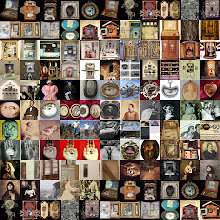
Holy Week, Seville.
What was interesting to me was my usual insider-outsider position where I am aware of the magnitud of religious ceremonies but have not participated in them. And I would underline the fact (feeling) that Spain is a culturally catholic country, despite it's laic government. Although many people might not be religious, like me, we have catholic culture embedded to the bone. Although I am not a believer, I find the processions very powerful and moving, and I love to see others engaging so emotionally and spiritually, and have a profound respect (almost veneration) for this that is characteristically a spanish way of experiencing the spiritual, a way that lies close to my heart, yet I do not share.
Needless to say, re-experiencing my own culture coming back home, living abroad, makes everything that I consider 'spanish' specially moving and with which to identify with.
With my interest in performance, I looked at processions from another viewpoint as well, enjoying the ritual and ceremonial, the fantastic visual and symbolic power. The dramatization that surrounds the suffering of the body, the importance of the performative, (the repeating, the ritual) in establishing an emotional communal link. In my view, the procession culturally binds the community because it is a shared experience of that primordial sacrifice, a shared identification with the suffering body that gave itself to 'us'.




